Physical Address
304 North Cardinal St.
Dorchester Center, MA 02124
Physical Address
304 North Cardinal St.
Dorchester Center, MA 02124
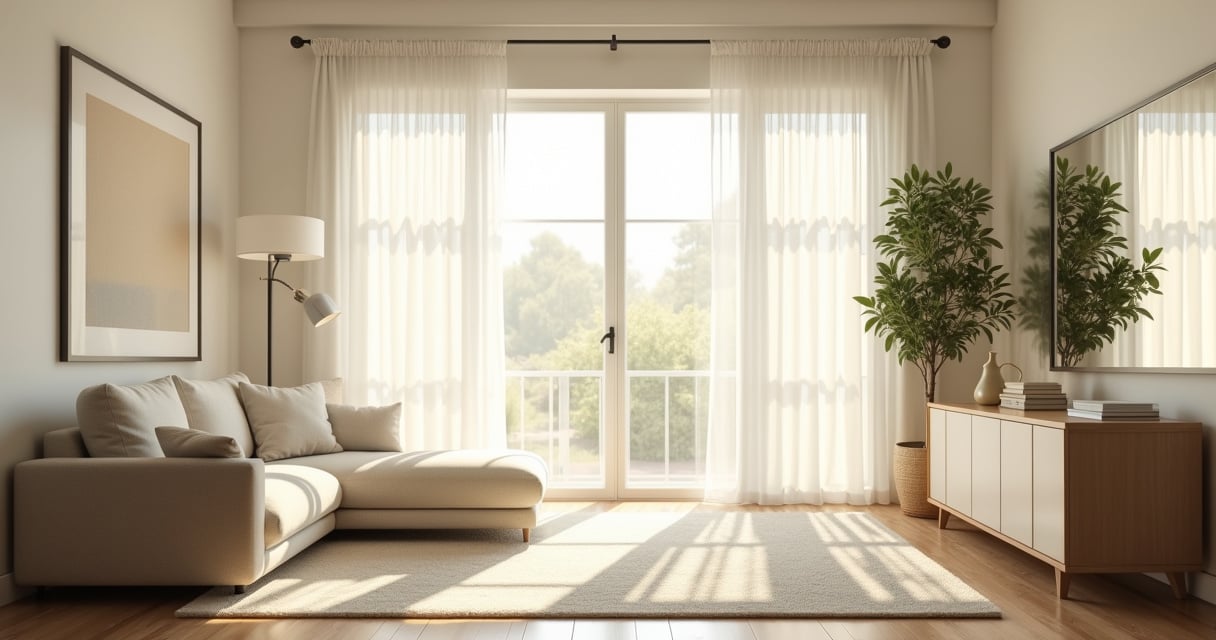
Is your living room feeling a little… lifeless? Often, the culprit isn’t your furniture or décor, but something far more fundamental: the lighting. A well-lit living room isn’t just about banishing shadows; it’s about creating an atmosphere that breathes life into your space.
Imagine walking into your living room and feeling instantly uplifted by the perfect balance of light—soft ambient glow from above, focused task lighting for your favorite reading nook, and accent lights highlighting that architectural detail you adore. That’s the magic of thoughtful living room lighting.
Ever walked into a living room that felt either stark and uninviting or dim and dreary? Chances are, it was missing the crucial element of layered lighting. Think of layered lighting as building a symphony of light, where ambient, task, and accent lighting each play a specific role to create a harmonious space.

Ambient lighting provides the foundation—your overall illumination. Task lighting focuses on specific activities like reading or hobbies. Accent lighting adds the drama, highlighting artwork or architectural features that might otherwise go unnoticed.
“The secret to a well-lit living room isn’t brightness—it’s balance. When I restore historical homes, I’m always looking for ways to honor the original architecture while creating layers of light that serve modern living.” – Rachel Blackwood
Here’s where it gets interesting—the most successful living room lighting schemes allow you to control each layer independently, adapting to different moods and activities throughout the day.
Natural light is more than just illumination; it’s a mood booster and energy enhancer. In my years of historical renovation work, I’ve seen how the thoughtful preservation of original windows can transform a living room’s character while providing that irreplaceable natural glow.

To maximize sunlight, consider these window treatment options:
The game-changer happened as I worked on a Victorian home in Boston—by simply replacing heavy drapes with period-appropriate lace panels, we doubled the perceived light while maintaining the home’s historical integrity.
The color temperature of your living room lighting dramatically affects both mood and how colors appear in your space. Measured in Kelvin (K), lower values (2700K-3000K) produce a warm, yellowish light while higher values (4000K-6500K) create cooler, bluer light.
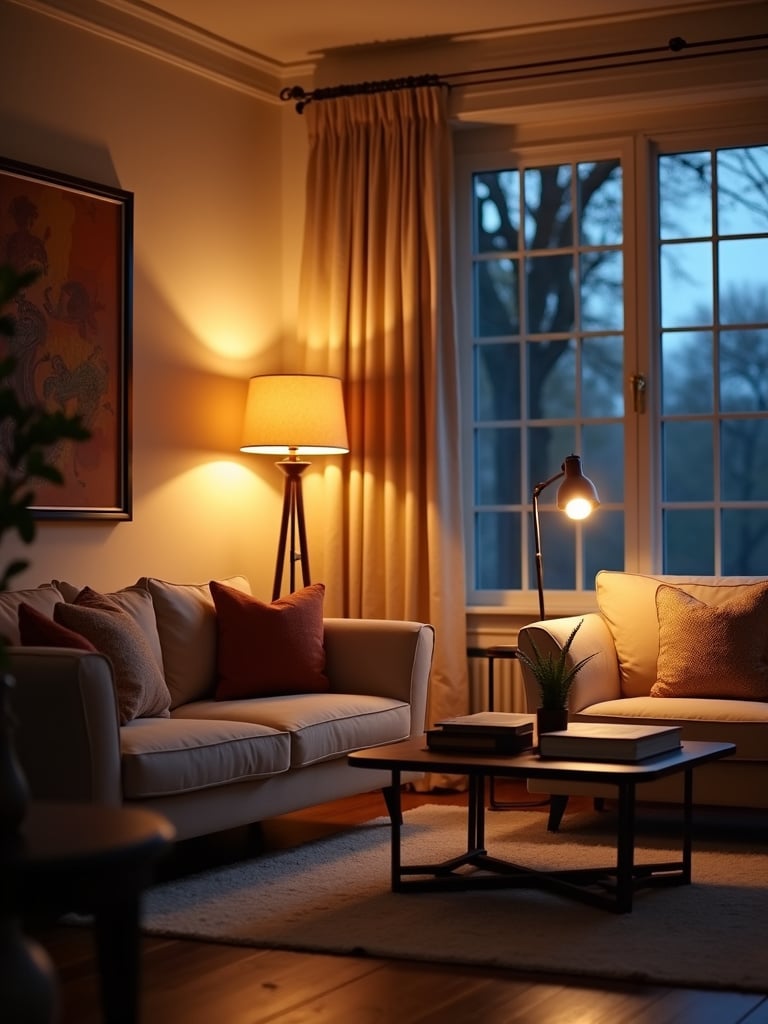
My breakthrough came when working with a client whose living room felt “off” despite beautiful period furniture and perfect paint colors. The culprit? Cool white bulbs that made her warm-toned antiques look dull and lifeless. Switching to warm white transformed the space, bringing out the rich patina of her 19th-century pieces.
The tricky part is matching color temperature to your living room’s function and décor. Warm light creates cozy, relaxing atmospheres perfect for traditional spaces. Cool light offers a clean, modern feel but might feel sterile if overused. Daylight bulbs are best reserved for task areas where color accuracy is crucial.
Corners often become the forgotten zones of a living room, shadowy and underutilized. In my restoration work, I’ve found that properly illuminating these areas can make even the smallest living room feel dramatically larger and more balanced.
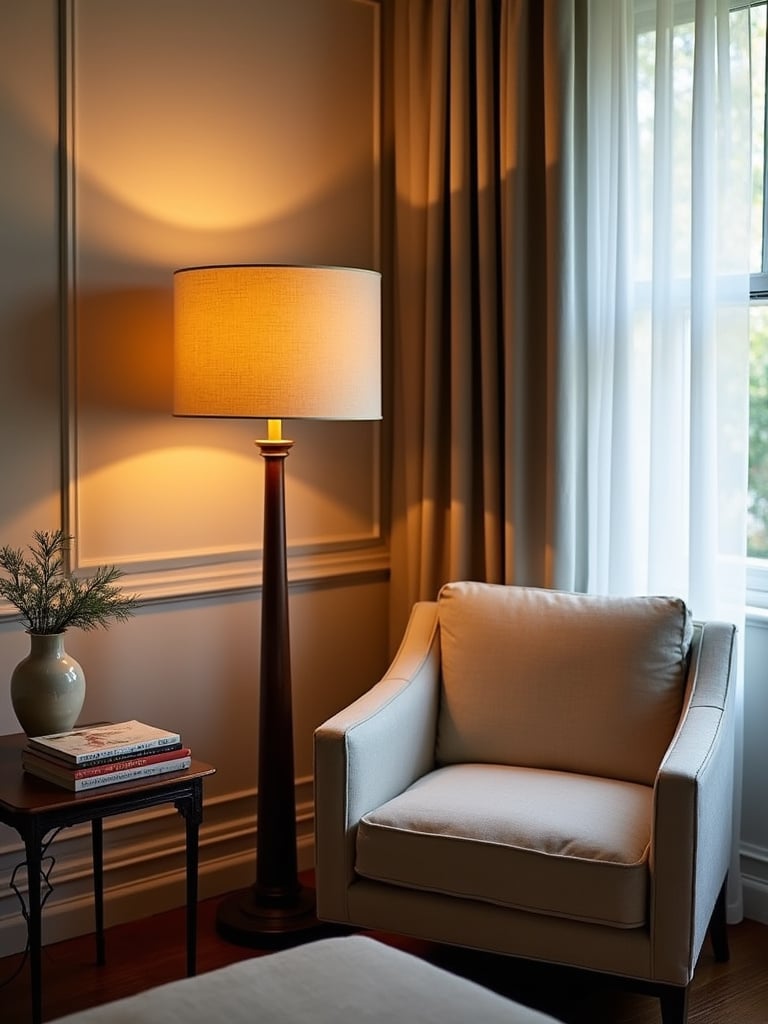
For effective corner illumination, I typically recommend:
Picture it this way—light bouncing off corners creates a visual expansion of your space. In one 1920s bungalow I worked on, adding period-appropriate corner sconces not only eliminated shadows but highlighted the original plaster crown molding that had been virtually invisible for decades.
In rooms where vertical space feels limited, floor lamps can be transformative. They naturally draw the eye upward, visually expanding the height of your living room while providing that essential soft, ambient glow that overhead lighting often lacks.
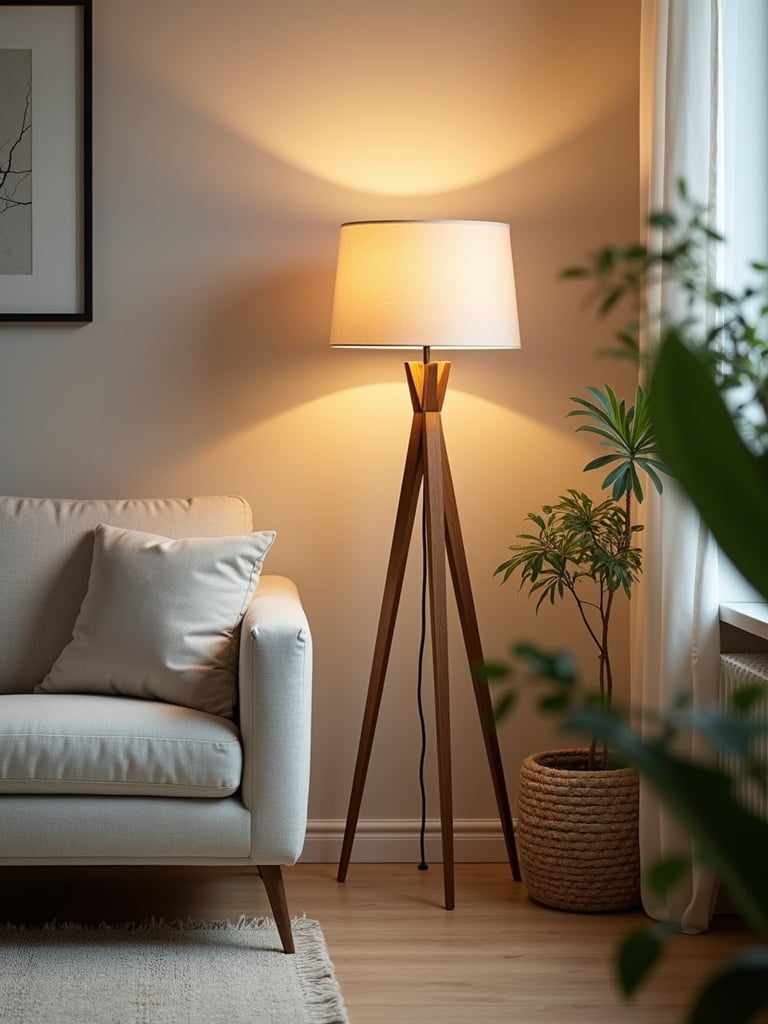
The key thing to understand is that floor lamps do double duty as both functional lighting and design elements. A tall arc lamp over a seating area creates an architectural statement while delivering perfect reading light. A slim torchiere in a corner washes the ceiling with light, making the entire room feel more expansive.
Let me paint you a picture—in a recent project involving a 1940s Cape Cod with low ceilings, I used three strategically placed floor lamps instead of a central ceiling fixture. The result was a living room that suddenly felt a foot taller, with pools of inviting light that drew people into different conversation areas.
Table lamps are the workhorses of living room lighting, offering both focused task light and soft ambient glow. I’ve found them particularly valuable in historical renovations where preserving original electrical work means limiting new ceiling fixtures.
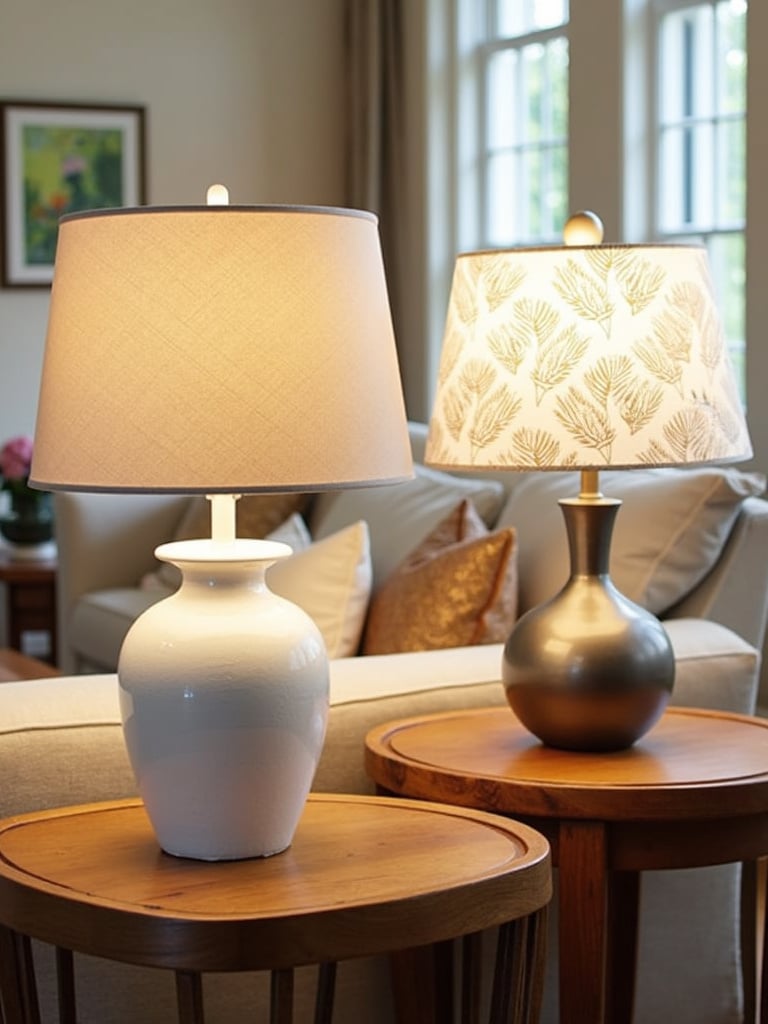
When selecting table lamps for side tables and consoles, consider these factors:
Do you see how huge that is? The right table lamp not only illuminates your novel or needlework but also creates intimate zones within larger living rooms. I often recommend pairs of matching lamps on console tables or flanking sofas for visual balance, but don’t be afraid to mix styles for a more collected, personal look.
For those seeking to inject drama into their living room, a statement chandelier is a powerful tool. Unlike a standard overhead fixture, a statement chandelier acts as decorative art that anchors the room and reflects your personal style.
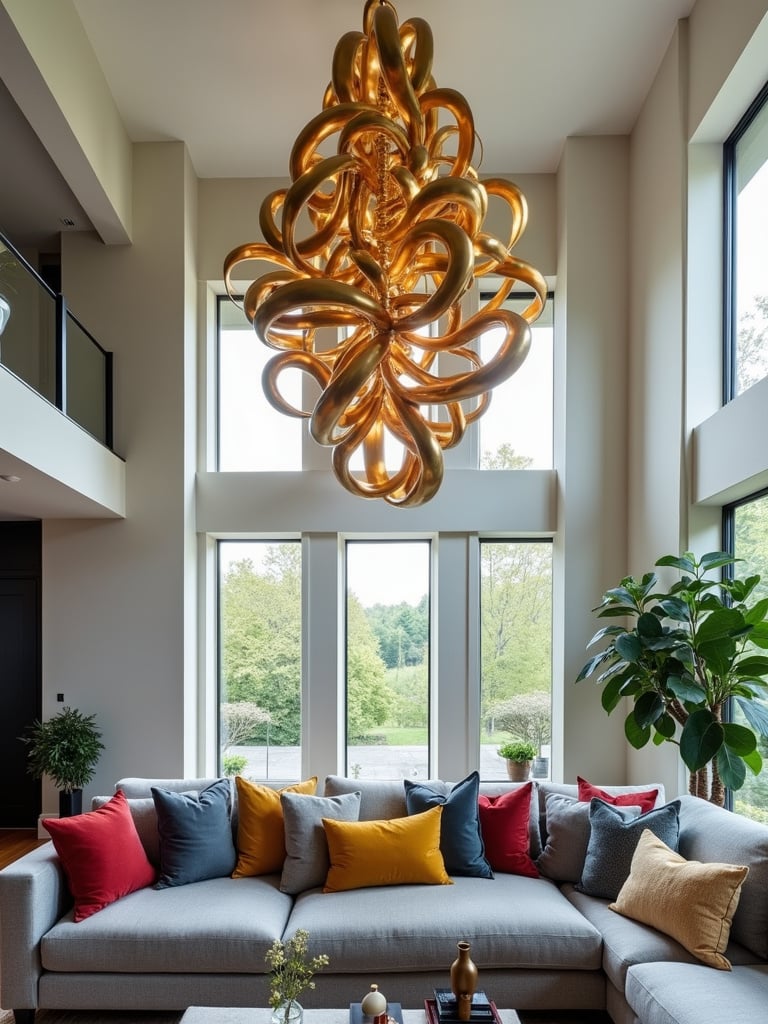
In my restoration work, I’ve seen how even historically accurate spaces can benefit from a slightly oversized or unexpected chandelier. The contrast between a clean-lined modern fixture and ornate Victorian moldings can be breathtaking, while a restored antique fixture can authenticate a carefully preserved period room.
My experience went like this—when helping clients furnish a converted 1890s schoolhouse with soaring ceilings, we installed a massive industrial-inspired chandelier with exposed Edison bulbs. The scale balanced the room’s height while nodding to the building’s utilitarian past. The lighting became not just functional but the conversation piece that defined the entire space.
For a minimalist and seamless lighting approach, recessed lighting offers undeniable advantages. In living rooms where architectural details should take center stage, these unobtrusive fixtures provide even illumination without visual clutter.
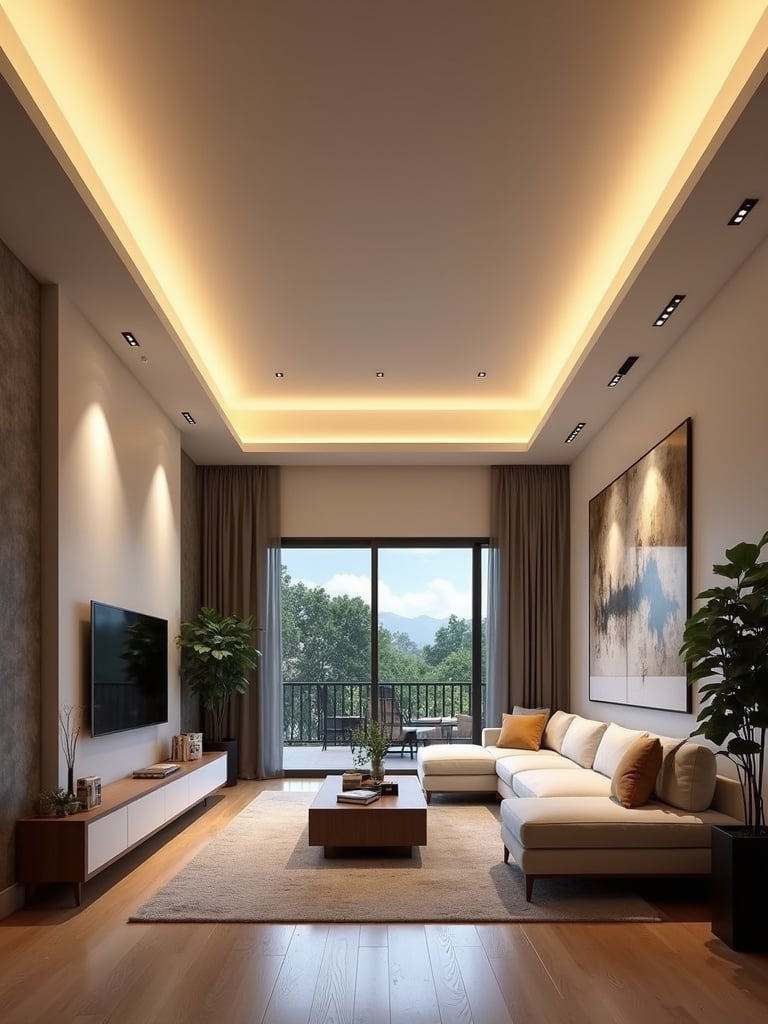
Recessed lighting comes in various trim types, each creating different effects:
The missing piece is often proper placement. When I’m working on a lighting plan for a historical renovation, I carefully consider the spacing and number of recessed lights. A common rule of thumb is to divide your ceiling height by two to determine spacing between lights, but I also consider the room’s specific features and focal points.
Wall sconces are elegant lighting solutions that have graced living rooms for centuries. In my preservation work, I often find original sconce locations that reveal how thoughtfully our predecessors considered lighting placement—knowledge we can apply to modern homes.
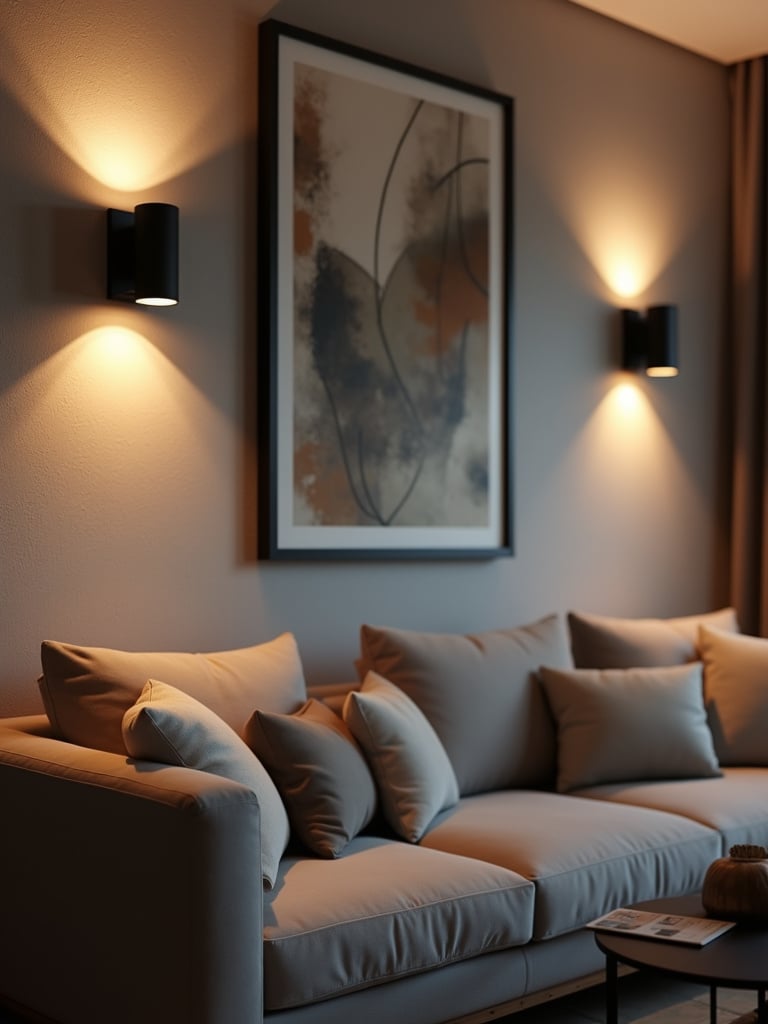
The beauty of sconces lies in their versatility. Candle sconces add romantic ambiance, uplights highlight architectural details, downlights provide focused task lighting, and swing-arm sconces offer adjustable illumination perfect for reading nooks. The style options are equally diverse, from sleek modern to ornate traditional designs.
What many people overlook is how sconces free up valuable surface space. In smaller living rooms where side tables might be cramped or limited, wall-mounted lighting provides necessary illumination without requiring table real estate. This historical solution remains perfectly relevant for today’s space-conscious living.
Flexibility is essential in living room lighting, and dimmable fixtures provide unparalleled adaptability. I’ve found that even meticulously planned lighting schemes fall short without the ability to adjust brightness levels to suit different activities and moods.
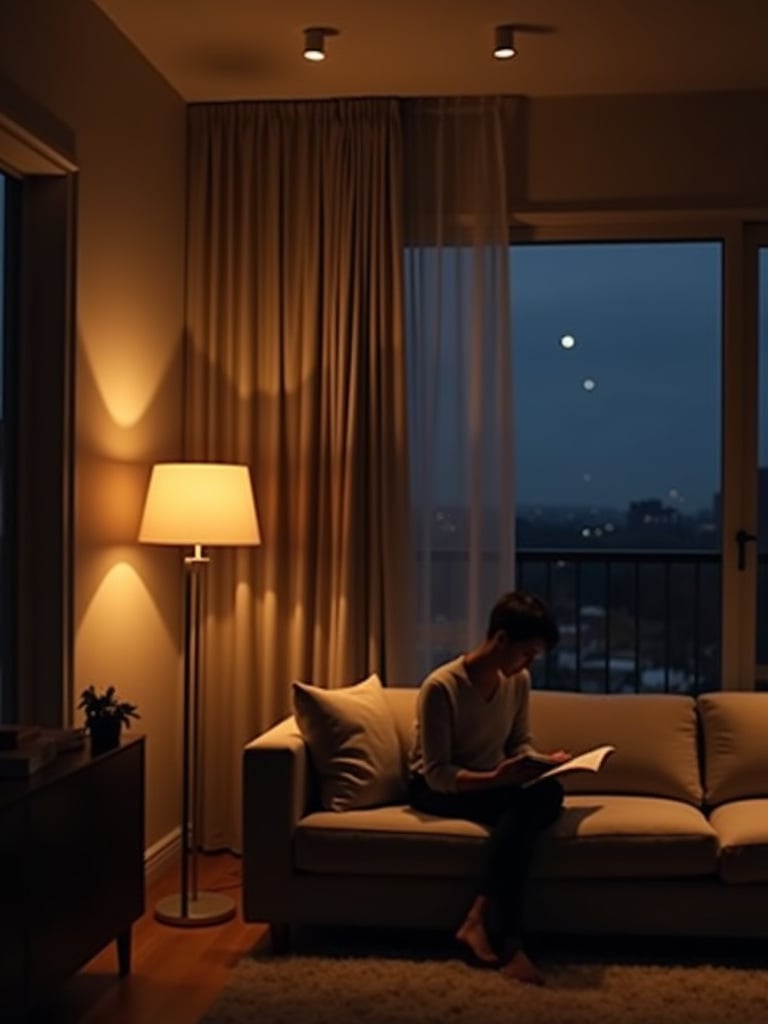
Most lighting fixtures can be paired with dimmers, including:
It works something like this—bright light for cleaning or daytime activities, medium light for casual gatherings, and low, warm light for evening relaxation or movie watching. In one Georgian revival I worked on, we installed period-appropriate dimmers that preserved the home’s character while adding modern functionality, allowing the owners to shift from bright illumination for their collection of antique porcelain to a softer glow for evening entertaining.
Taking lighting control to the next level, smart lighting systems offer remarkable convenience and customization. While I’m dedicated to preserving historical authenticity, I’ve found that thoughtfully integrated smart lighting can enhance period homes without compromising their character.
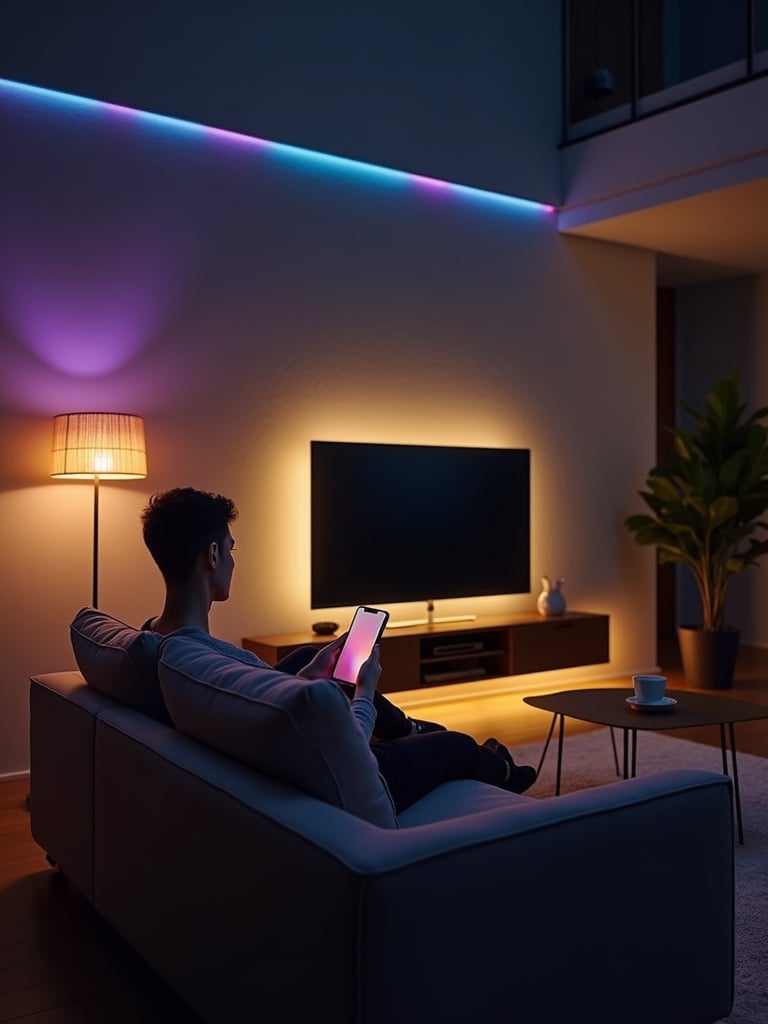
Smart lighting options include simple bulb replacements, sophisticated switches and dimmers, flexible light strips, and fully integrated fixtures. The key benefits include remote control via smartphone or voice commands, energy efficiency through scheduling, improved home security, and highly customizable ambiance settings.
Here’s the catch—choosing the right system requires considering your existing infrastructure, desired features, and compatibility with other smart home elements. I typically recommend starting with a few key areas of your living room before expanding to a whole-home system, ensuring the technology enhances rather than dominates your living experience.
Living rooms often have unique architectural elements that deserve special attention. In my preservation work, I’ve seen how strategic lighting can transform ordinary features into stunning focal points that tell the story of a home’s history.

Accent lighting can effectively highlight:
The heart of the matter is choosing the right fixture type for each feature. Track lighting offers flexibility for adjusting focus, spotlights provide dramatic emphasis, recessed lighting creates a clean look, wall washers evenly illuminate textured surfaces, LED strips add subtle glow to shelving, and picture lights specifically enhance artwork.
Beyond architectural features, your artwork and decorative pieces deserve thoughtful illumination. As someone who helps homeowners honor their homes’ histories, I’ve seen how proper lighting can transform even modest collections into museum-quality displays.
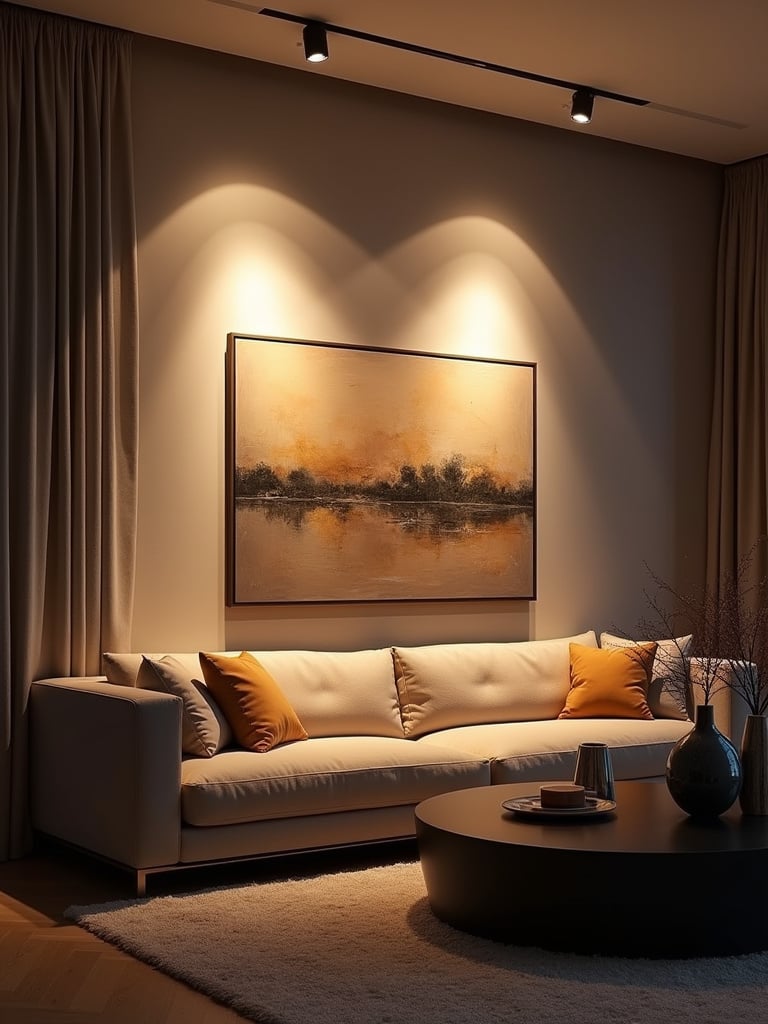
For effectively illuminating artwork and décor, consider these options:
Things took an interesting turn when I worked with a client who had inherited family portraits dating back to the 1800s. By installing historically sympathetic picture lights with modern LED technology, we preserved the paintings while bringing the ancestors’ faces to life, creating an emotional connection that flat, ambient lighting had never achieved.
In interior design, scale and proportion are paramount, and living room lighting is no exception. I’ve seen how fixtures that are too large can overwhelm a space, while those too small can look insignificant and fail to provide adequate illumination.
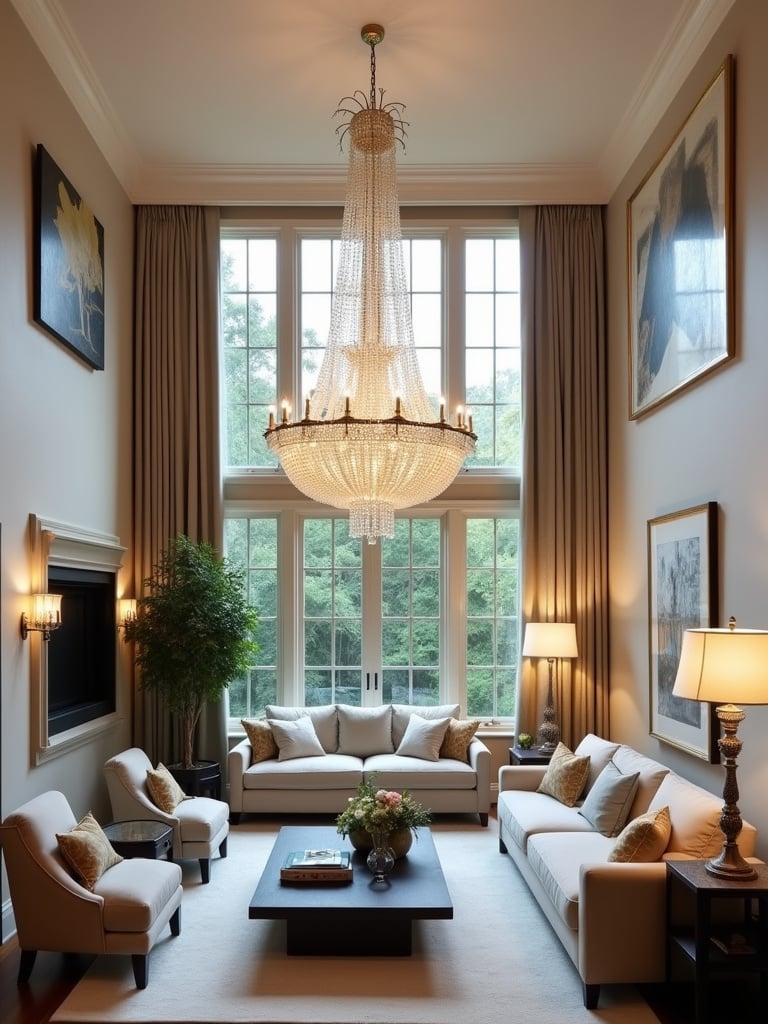
For chandeliers and pendant lights, a useful formula is to add your room’s length and width in feet, then convert to inches for the ideal fixture diameter. For example, a 12’ × 15’ living room would suit a 27″ diameter chandelier. Height matters too—ensure at least 7’ clearance from the floor in standard-height rooms, while higher ceilings allow for lower hanging fixtures that create intimacy.
You might be wondering about floor and table lamps as well. For these, consider the height of nearby furniture. Floor lamp shades should sit at roughly eye level when seated, while table lamps should be proportional to their supporting surfaces—neither towering above nor appearing diminutive on their tables.
For those who love a curated and personalized look, mixing lighting styles can create fascinating visual interest. Throughout my career in historical renovation, I’ve found that even period-accurate spaces benefit from thoughtfully combined lighting elements that span different eras.
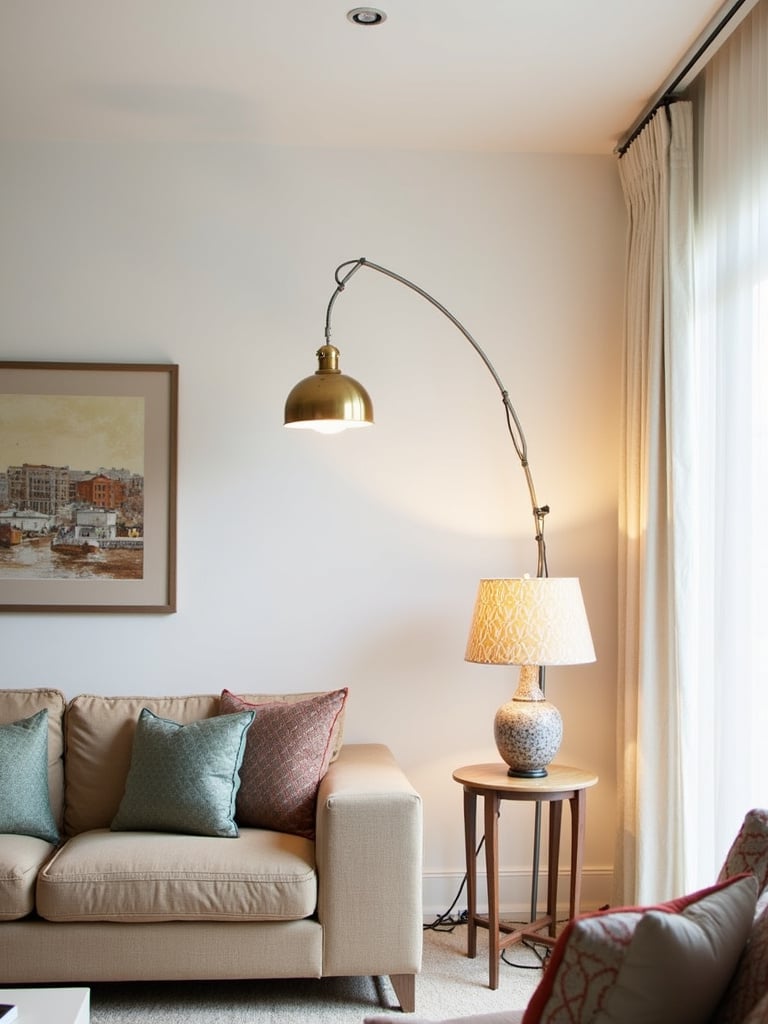
The stumbling block is maintaining cohesion amid variety. To successfully mix lighting styles, focus on a unifying element—perhaps a consistent color palette, shared material, or similar finish across different fixtures. For example, you might combine a vintage brass floor lamp with a modern pendant, unified by their warm metallic tones.
It’s kinda like creating a carefully curated collection rather than a matching set. In one Victorian renovation, we paired original gas sconces (converted to electric) with mid-century table lamps and contemporary recessed lighting. The contrast highlighted each period’s craftsmanship while creating a home that felt collected over time rather than decorated in a single shopping trip.
In today’s world, energy efficiency is both environmentally responsible and budget-friendly. LED bulbs consume up to 80% less energy than traditional incandescent bulbs while producing the same amount of light, translating to significant savings on your electric bill.
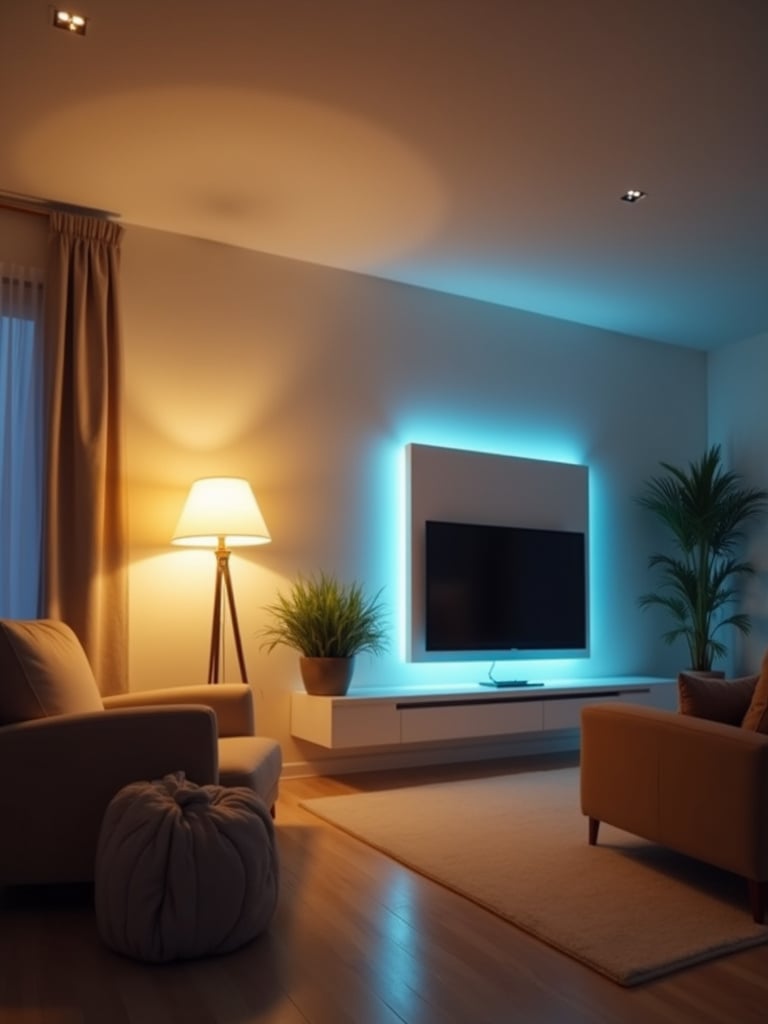
Beyond immediate energy savings, LEDs offer remarkable longevity—typically 25,000 to 50,000 hours compared to just 1,000 hours for incandescent bulbs. This dramatically reduces replacement frequency and associated costs, making LEDs a smart investment despite their higher initial price point.
Let that sink in for a moment—switching your living room lighting to LEDs could save hundreds of dollars over the fixtures’ lifetime while significantly reducing your carbon footprint. As someone who balances historical authenticity with modern practicality, I often recommend LED bulbs that mimic the warm glow of traditional incandescents, preserving atmosphere while embracing efficiency.
For a subtle yet impactful way to enhance your living room’s coziness, consider layering light behind furniture. This technique introduces visual depth and a gentle glow that feels inherently inviting and relaxing.

Furniture pieces best suited for backlighting include:
My discovery began when working on a Federal-style home where period-appropriate lighting felt too harsh and direct. By adding concealed LED strips behind the sofa and under a console table, we created a soft ambient glow that complemented the antique brass sconces, resulting in a historically respectful space that still felt warm and livable.
Mirrors are powerful tools for manipulating light and creating a sense of spaciousness in your living room. I’ve employed this technique countless times in historical renovations where adding new windows or fixtures would compromise architectural integrity.
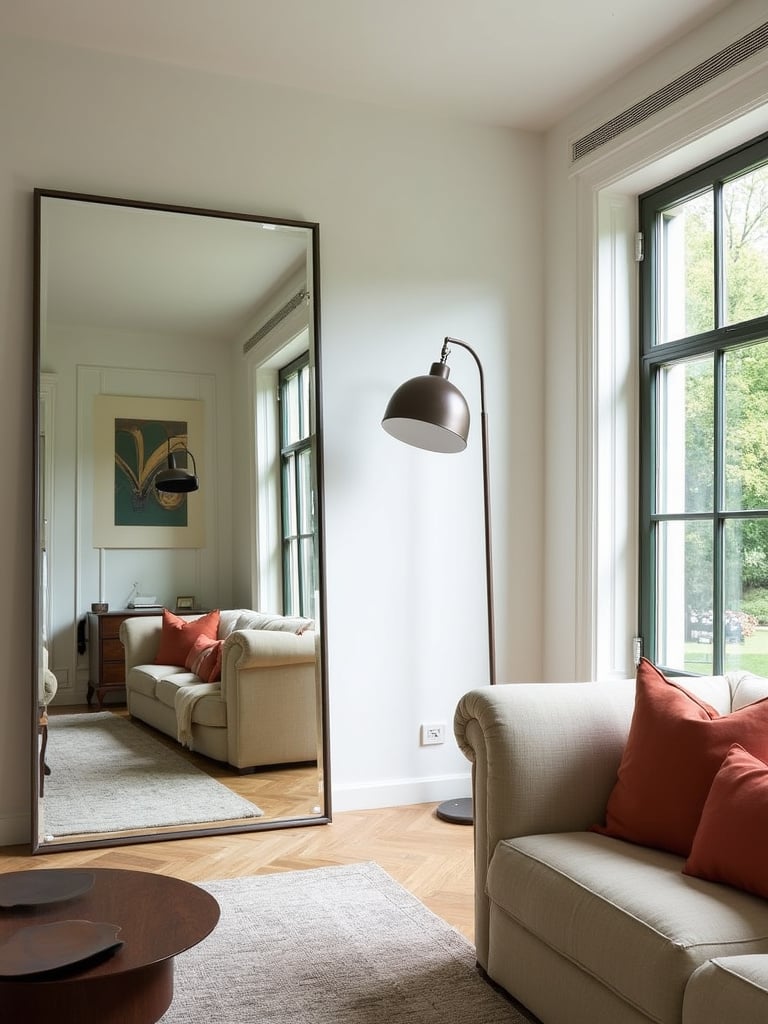
Larger mirrors, especially those with minimal frames, reflect the greatest amount of light. While shape is less critical than size, vertical mirrors can visually elongate walls and create the illusion of higher ceilings, further enhancing the sense of space.
The breakthrough came when I placed a large antique mirror opposite a north-facing window in a dark Victorian parlor. The reflected light instantly brightened the room, making the original paint colors sing and eliminating the need for additional electrical fixtures that would have damaged the ornate plasterwork. Sometimes the most effective lighting solutions are the ones that work with what you already have.
Living rooms with built-in units like bookshelves or entertainment centers benefit tremendously from targeted lighting. Under-cabinet lighting not only improves functionality but also adds a layer of ambient light that creates warmth and visual interest.
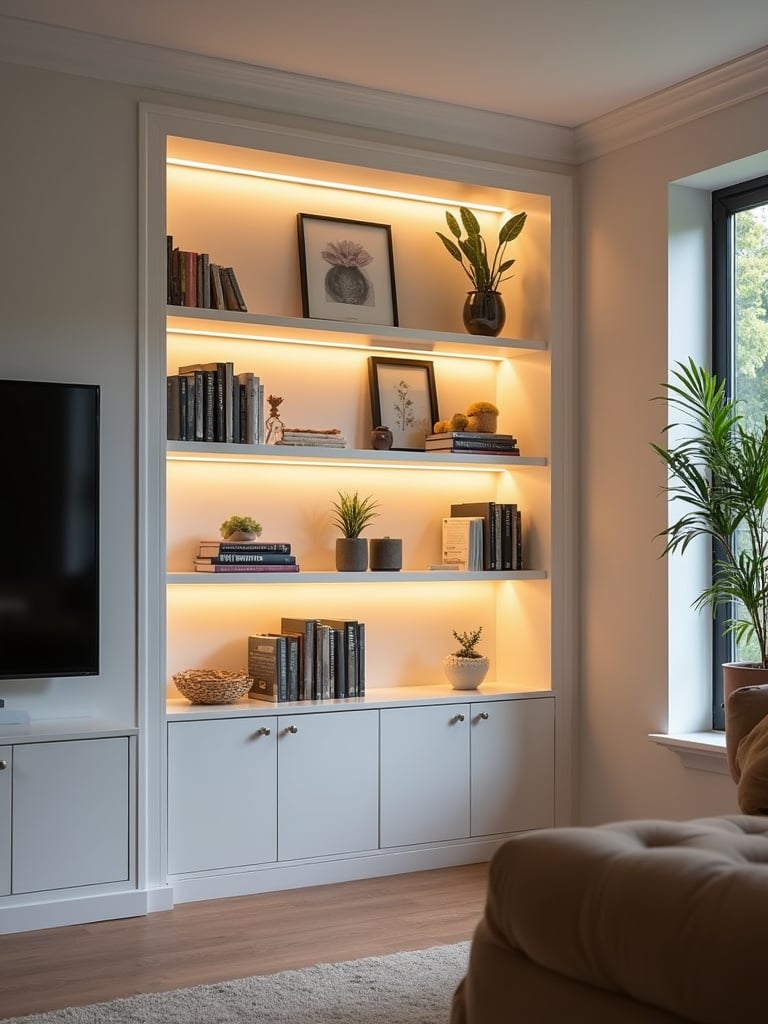
Several options exist for under-cabinet lighting:
Perhaps you’ve already guessed that color temperature matters here too. For living room built-ins, I typically recommend warmer tones (2700K-3000K) that create a cozy, inviting atmosphere rather than the cooler tones often used in kitchens. This subtle choice makes the difference between a display that feels clinical versus one that feels welcoming and integrated with your living space.
For a touch of whimsy and flexibility, portable lighting options add character without commitment. In my work preserving historical homes, I often find that even the most authentically restored spaces benefit from these adaptable lighting elements.
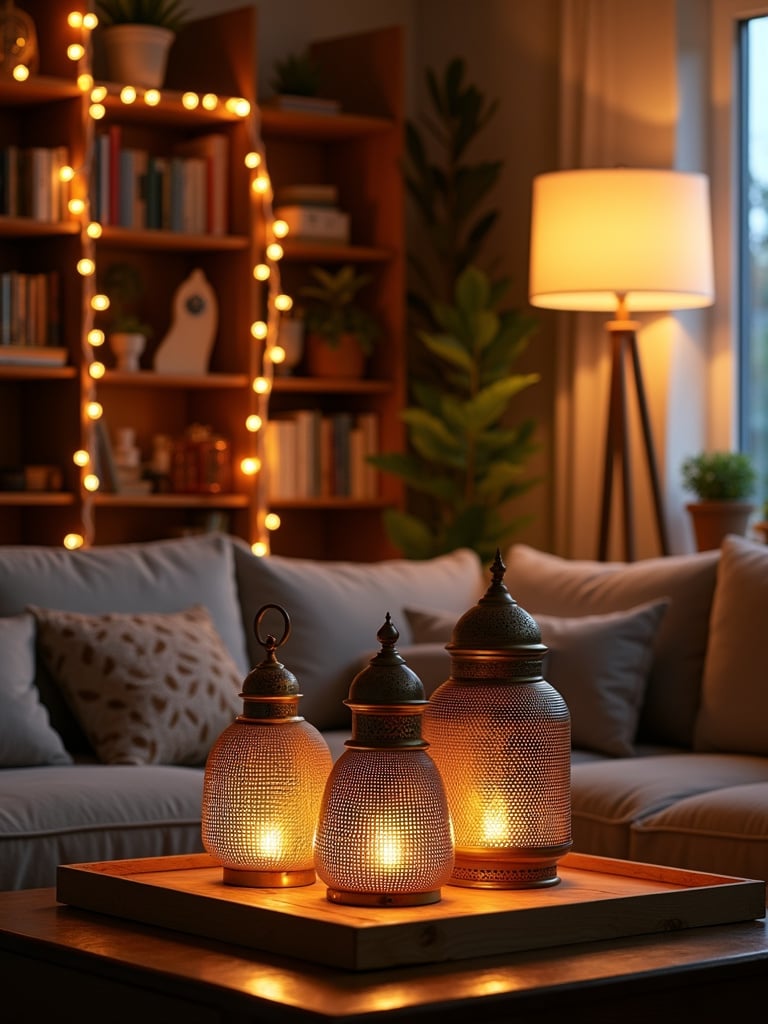
String lights come in various styles, from delicate fairy lights to bolder globe lights, each creating a different mood. Lanterns offer even more diversity—electric, battery-operated, or candle-lit, in materials ranging from metal and wood to glass and paper, each bringing its own aesthetic to your living room.
The ripple effects are enormous—these portable options allow you to change your living room lighting seasonally or even weekly without any permanent modifications. This is particularly valuable in historical homes where preserving original features limits hardwired installations, or for renters who want to personalize their lighting without sacrificing security deposits.
While the type and placement of living room lighting are crucial, the finishing touches matter just as much. Lampshades and fixture finishes are the jewelry of your lighting scheme—they refine and complete the look while affecting light quality and distribution.
When selecting lampshades, consider:
The implications are staggering—a simple shade swap can transform both the light quality and style of your entire living room. In one project, replacing heavy Victorian-style shades with simpler linen drums maintained the historical integrity of antique lamp bases while creating a lighter, more contemporary feel that better suited the homeowners’ lifestyle.
Transforming your living room lighting is about creating an environment that enhances your daily life, reflects your personal style, and respects your home’s character. By mastering the art of layering, embracing natural light, and paying attention to details like color temperature and scale, you can craft a space that’s both beautifully illuminated and deeply inviting.
As a historical renovation consultant, I’ve seen how thoughtful lighting can breathe new life into spaces while honoring their past. Whether you live in a Victorian treasure or a contemporary apartment, these 21 lighting ideas offer a pathway to a living room that feels authentic, functional, and uniquely yours. The perfect lighting scheme balances preservation with adaptation, tradition with innovation, and atmosphere with practicality—just like the homes we love.